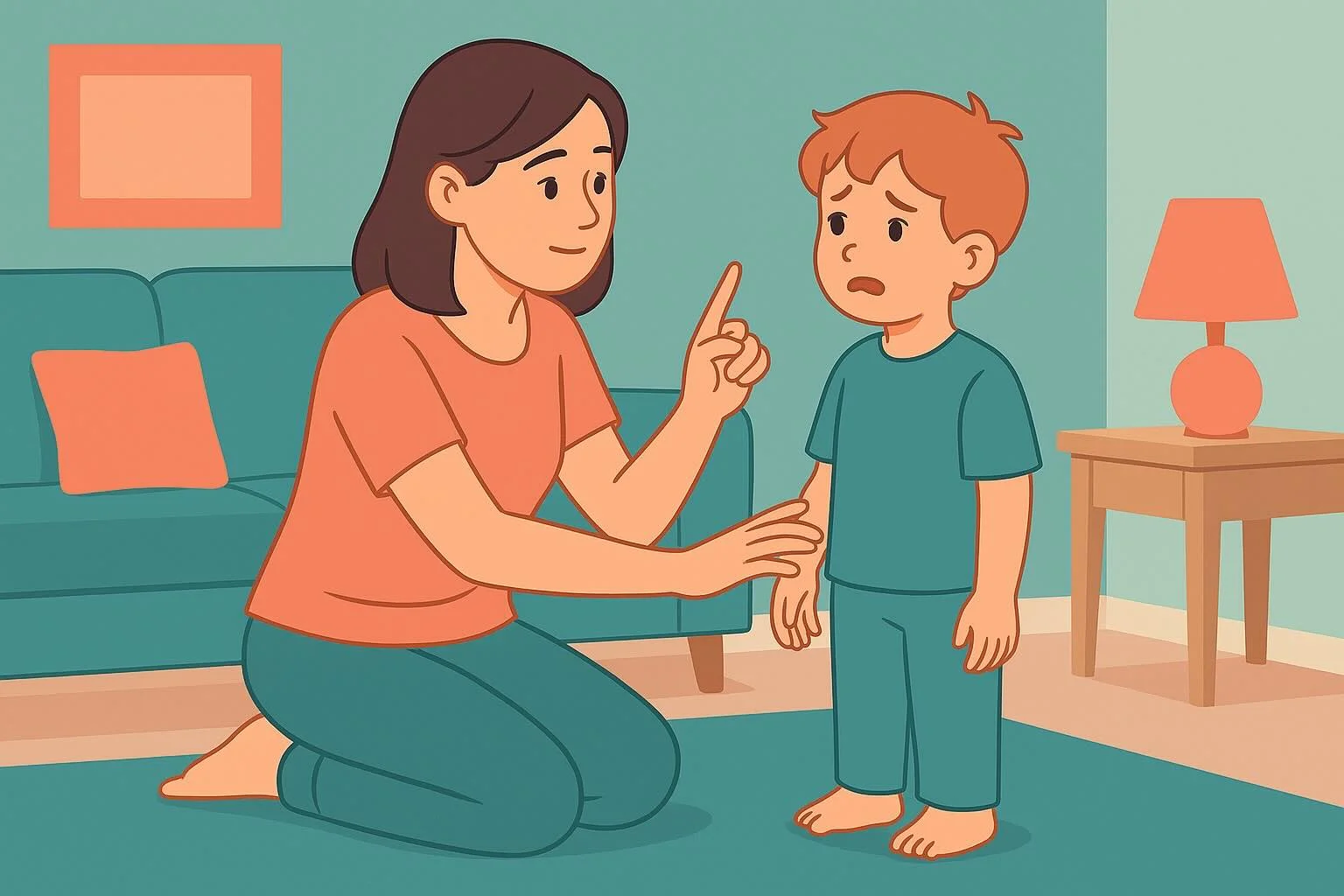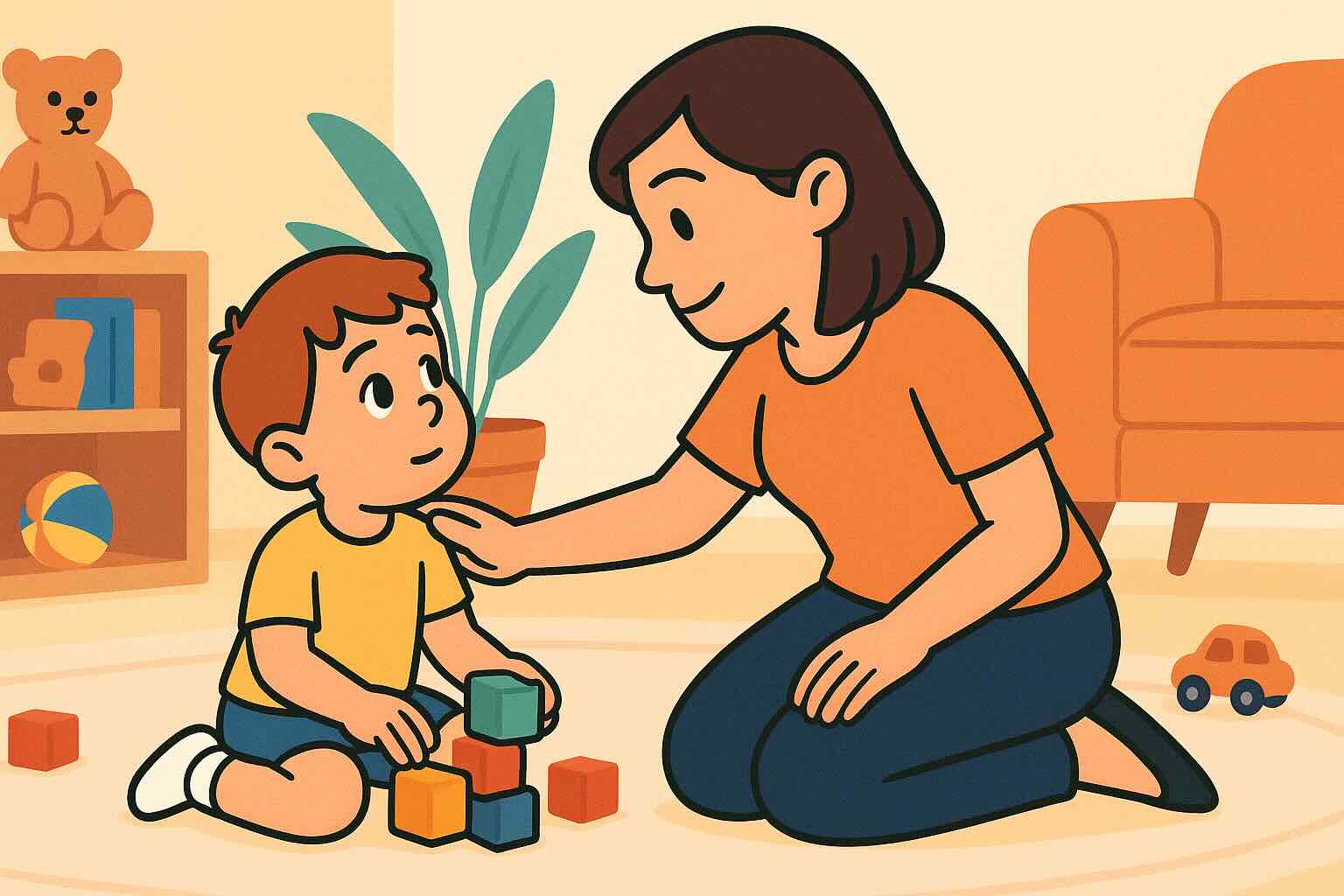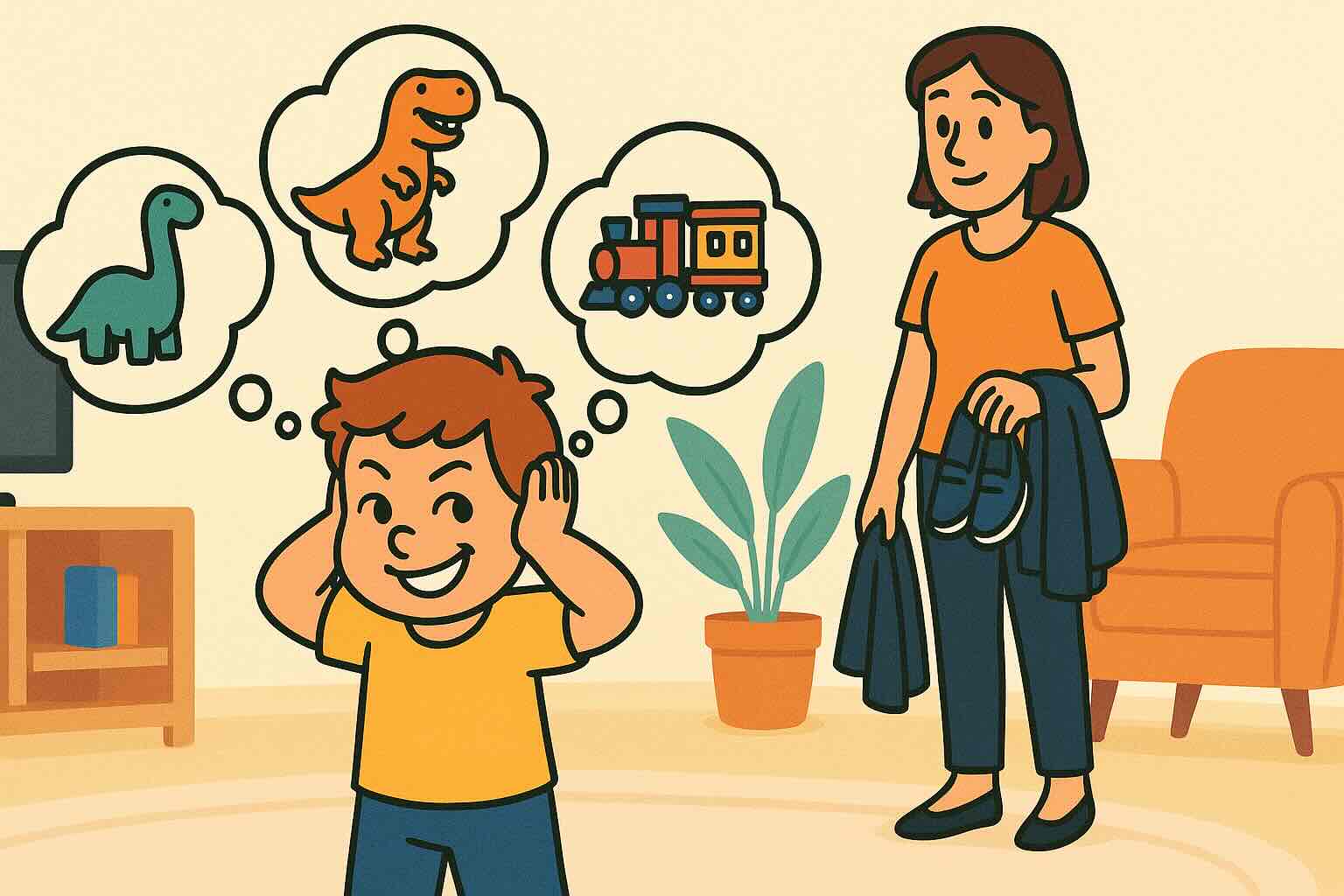Positive Discipline for 4 Year Olds: 15 Real Examples

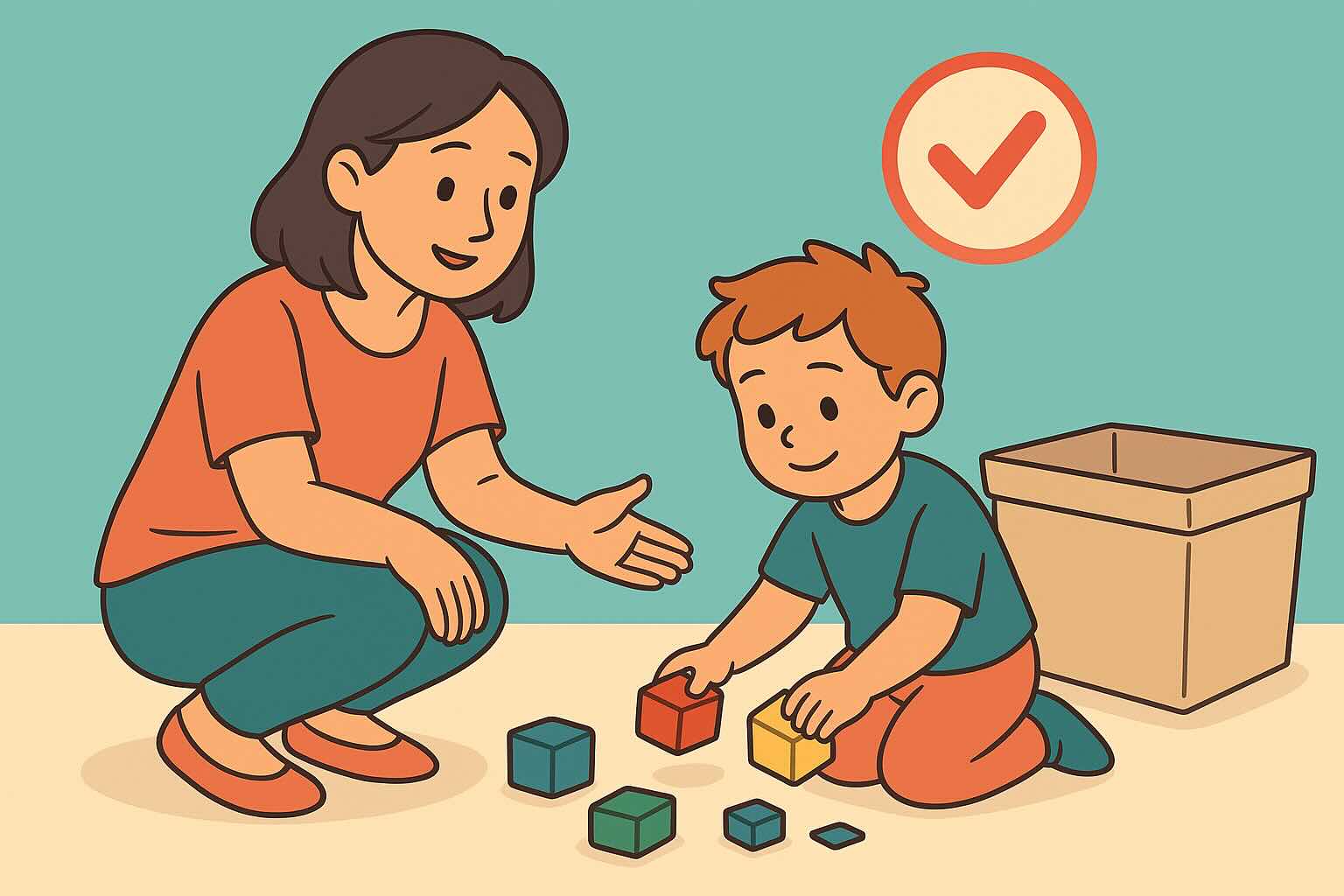
Your 4-year-old stands in the middle of the kitchen, arms crossed, declaring "You're not the boss of me!" after you've asked them to put their shoes away. Your first instinct might be to assert your authority with consequences or timeouts. But what if this moment of defiance is actually an opportunity to build cooperation and understanding?
Positive discipline for 4-year-olds recognizes their developmental leap in language, independence, and reasoning while still honoring their need for guidance and connection. Four-year-olds are at a fascinating crossroads - they're more capable than toddlers but still need significant support for emotional regulation and decision-making. This is the age where relationship-based discipline truly shines.
This comprehensive guide provides specific examples, detailed scripts, and practical strategies for common 4-year-old challenges. You'll learn how to work with their growing independence while building the internal motivation and problem-solving skills that create lifelong cooperation. For related approaches, see our guides on managing power struggles and building cooperation without rewards.
What You'll Learn in This Guide
- The 4-Year-Old Developmental Reality - Understanding their unique capabilities and needs
- Connection-Based Authority - Leading with relationship while maintaining boundaries
- Real-World Scenario Solutions - Specific examples with word-for-word responses
- Handling Defiance and Testing - Why they test and how to respond constructively
- Natural Consequences That Teach - Age-appropriate learning opportunities
- Building Problem-Solving Skills - Developing their growing cognitive abilities
- Emotional Intelligence Development - Supporting their expanding emotional world
- Creating Cooperative Patterns - Long-term strategies for willing partnership
Estimated reading time: 16 minutes
Understanding Your 4-Year-Old's Developmental Leap
What's Different About 4-Year-Olds
New Capabilities:
- Advanced language skills - Can express complex thoughts and negotiate
- Growing independence - Want to do things "by myself"
- Improved memory - Remember rules and past experiences better
- Social awareness - Understand fairness, rules, and social dynamics
- Beginning logical thinking - Can understand simple cause and effect
Still Developing:
- Emotional regulation - Big feelings still overwhelm their thinking brain
- Impulse control - Act on desires before thinking through consequences
- Perspective-taking - Difficulty seeing other viewpoints consistently
- Abstract thinking - Need concrete examples and immediate connections
- Stress tolerance - Become dysregulated more easily than adults
What This Means for Discipline:
- They can understand more complex explanations but still need emotional support
- They're testing boundaries to understand their power and your consistency
- They need respect for their growing autonomy within appropriate limits
- They benefit from collaborative problem-solving but still need adult guidance
The Science Behind 4-Year-Old Behavior
Why They Test Boundaries:
- Testing is information-gathering, not disrespect
- They're learning about cause and effect in relationships
- Boundary testing helps them feel secure in your consistency
- It's a normal part of developing autonomy and identity
Brain Development Reality:
- The prefrontal cortex (executive function) is still very immature
- Stress hormones can hijack their best intentions
- They need co-regulation to learn self-regulation
- Connection activates their learning and cooperation centers
Core Principles for 4-Year-Old Positive Discipline
Principle 1: Respectful Authority
Balance leading with warmth and firmness simultaneously.
Traditional approach: "Because I said so!" Positive discipline: "I understand you have a different idea, and this is what we're doing."
Principle 2: Collaborative Problem-Solving
Include them in finding solutions while maintaining adult leadership.
Traditional approach: "You broke it, you're in trouble." Positive discipline: "The vase broke when you were running. How can we solve this problem?"
Principle 3: Teaching Through Experience
Let them learn from safe, age-appropriate consequences.
Traditional approach: Arbitrary punishment unrelated to behavior Positive discipline: Natural consequences that connect to their choices
Principle 4: Honor Their Growing Mind
Acknowledge their thoughts and feelings while maintaining boundaries.
Traditional approach: Dismiss their perspective Positive discipline: "You think that's unfair. Tell me more about your idea."
Real-Life Positive Discipline Examples by Situation
Scenario 1: The "You're Not the Boss of Me" Declaration
The Situation: You ask your 4-year-old to clean up their art supplies, and they defiantly declare "You're not the boss of me! I don't have to do what you say!"
Traditional Response: "Oh yes I am! I'm the parent and you're the child! Go to your room right now for talking back to me!"
Positive Discipline Response:
Step 1 - Acknowledge Their Perspective "You're telling me you don't want to clean up, and you don't want me to tell you what to do. You want to be in charge of yourself."
Step 2 - Validate Their Developmental Need "You're growing up and you want more control over your choices. That makes sense."
Step 3 - Maintain the Boundary with Respect "AND the art supplies need to be put away so they don't get lost or broken. That's how we take care of our things."
Step 4 - Offer Collaboration "Would you like to put them away quickly or slowly? Should we race to see who can clean up more, or would you prefer to do it yourself while I watch?"
Step 5 - Follow Through with Connection "I can see you're still feeling upset about cleaning up. I'll stay here with you while you put the supplies away."
Why This Works:
- Validates their desire for autonomy
- Doesn't engage in a power struggle
- Maintains the necessary boundary
- Offers choices within the expectation
- Stays connected during the difficulty
Scenario 2: Aggressive Play That Hurts Others
The Situation: Your 4-year-old is playing "monster" and starts chasing and grabbing their younger sibling, who is crying and trying to get away.
Traditional Response: "Stop that right now! You're being mean to your sister! No more playing for you!"
Positive Discipline Response:
Step 1 - Ensure Safety First "I see rough play and I hear crying. Everyone needs to be safe." Gently intervene to stop the aggressive behavior
Step 2 - Address Both Children's Experiences "You were having fun playing monster, and your sister got scared and hurt. Let's help everyone feel better."
Step 3 - Problem-Solve Together "How can we play monster games that are fun for everyone? What would make it safe and fun?"
Step 4 - Teach Empathy and Repair "Look at your sister's face. What do you think she's feeling? What might help her feel better?"
Step 5 - Guide Toward Solutions "Next time you want to play a chasing game, how can you make sure everyone wants to play? Maybe ask first, or play with stuffed animals instead?"
Follow-up Natural Consequence: "Your sister doesn't want to play with you right now because she felt scared. That's what happens when our play gets too rough - people don't want to play with us anymore."
Why This Works:
- Addresses safety without shame
- Teaches empathy and perspective-taking
- Builds problem-solving skills for future situations
- Natural consequence teaches about relationships
- Preserves sibling relationship long-term
Scenario 3: Public Meltdown Over Denied Request
The Situation: At Target, your 4-year-old sees a toy they want, you say no, and they begin screaming, throwing themselves on the floor, and declaring "You're the meanest mom ever!"
Traditional Response: "Get up right now! You're embarrassing me! If you don't stop this tantrum, you're in big trouble when we get home!"
Positive Discipline Response:
Step 1 - Stay Calm and Get Close Crouch down to their level, staying physically near "You're so disappointed about the toy. That's a big feeling."
Step 2 - Validate Without Changing the Boundary
"You really, really wanted that toy, and I said no. That's disappointing when we can't have something we want."
Step 3 - Acknowledge Their Expression "You're showing me how upset you are with your whole body. I can see this is really hard for you."
Step 4 - Offer Support and Choices "I'm going to stay right here with you while you have these big feelings. When you're ready, would you like to walk to the next aisle or would you like me to carry you?"
Step 5 - Connect and Move Forward "That was hard. You wanted something and couldn't have it. That happens sometimes, and you got through those big feelings. I'm proud of you."
Why This Works:
- Doesn't escalate the emotional intensity
- Validates their feelings without rewarding the behavior
- Models emotional regulation
- Maintains dignity for both parent and child
- Teaches that big feelings are temporary and manageable
Scenario 4: Bedtime Power Struggles
The Situation: Every night becomes a negotiation marathon - your 4-year-old wants "five more minutes," needs water, has to go potty, and finds endless reasons to delay sleep.
Traditional Response: "I've had it with bedtime excuses! Get in that bed right now or you lose stories tomorrow night!"
Positive Discipline Response:
Step 1 - Acknowledge Their Strategy "I notice you're finding lots of reasons to stay up. You really don't want bedtime to happen."
Step 2 - Validate Their Perspective "It's hard when fun time has to end. You wish you could keep playing and being with us."
Step 3 - Offer Connection Within the Boundary "Bedtime is still happening, and I want to make it special. Should we read stories in your bed or in the big chair?"
Step 4 - Address Needs Proactively "Let's get water now, use the potty now, and then once you're in bed, your body can rest."
Step 5 - Create Positive Association "I love our bedtime routine. It's special time just for us. What should we talk about while you fall asleep?"
Natural Consequence for Delays: "We have 20 minutes for bedtime routine. If we spend 15 minutes getting ready, we have 5 minutes for stories. If we spend 5 minutes getting ready, we have 15 minutes for stories."
Why This Works:
- Acknowledges their desire without giving in
- Makes bedtime about connection, not punishment
- Gives them some control within the boundary
- Natural consequences teach time management
- Creates positive associations with sleep
Scenario 5: Morning Routine Resistance
The Situation: Getting ready for school becomes a daily battle with your 4-year-old dawdling, arguing about clothes, and melting down when it's time to leave.
Traditional Response: "We're going to be late again because you won't listen! If you don't get ready right now, you're losing TV time tonight!"
Positive Discipline Response:
Step 1 - Start with Connection "Good morning, sunshine! I love seeing your sleepy face. How did you sleep?"
Step 2 - Acknowledge the Challenge "Getting ready in the morning is hard. There's so much to remember and you're still waking up your body."
Step 3 - Create Collaborative Structure "Let's look at our morning list together. What do you want to do first - get dressed or eat breakfast?"
Step 4 - Offer Support and Autonomy "Do you want to pick out clothes by yourself, or would you like me to give you two choices?"
Step 5 - Use Natural Consequences "We leave for school at 8:00. If you're dressed and ready, we have time to play. If you're not ready, we'll finish getting dressed in the car."
Follow-up Problem-Solving: "Mornings have been hard for us. What makes it hard for you? What would help you feel more successful getting ready?"
Why This Works:
- Starts the day with connection instead of demands
- Involves them in creating structure
- Respects their need for autonomy
- Natural consequences teach time awareness
- Builds problem-solving partnership
Age-Appropriate Natural Consequences for 4-Year-Olds
When Natural Consequences Are Most Effective
4-year-olds can learn from consequences that are:
- Immediate or happen within the same day
- Clearly connected to their choice
- Safe and not overly harsh
- Understandable through their cognitive lens
Effective Natural Consequence Examples
Personal Care and Responsibility:
- Situation: Refuses to brush teeth
- Natural consequence: Teeth feel yucky, breath smells bad
- Your response: "Your teeth feel fuzzy because they didn't get cleaned. That's what happens when we skip brushing."
Social Interactions:
- Situation: Bossy or demanding with friends
- Natural consequence: Friends don't want to play
- Your response: "When we're bossy, friends don't enjoy playing with us. That's hard when we want to have fun together."
Taking Care of Belongings:
- Situation: Leaves bike outside in the rain
- Natural consequence: Bike gets wet and rusty
- Your response: "Your bike got wet because it stayed outside last night. What do you notice about it now?"
Following Through on Commitments:
- Situation: Doesn't feed pet as promised
- Natural consequence: Pet is hungry, you have to take over the responsibility
- Your response: "Fluffy is hungry because he didn't get breakfast. When we don't take care of responsibilities, someone else has to do it."
Creating Logical Consequences When Natural Ones Aren't Available
Household Rules and Safety:
- Situation: Running in the house after reminders
- Logical consequence: Practice walking or stay in one room
- Script: "Running inside isn't safe. You can practice walking feet, or play in your room where there's space to move."
Treating Others Poorly:
- Situation: Mean words to family member
- Logical consequence: Make amends and rebuild relationship
- Script: "Your words hurt Dad's feelings. What could help him feel better? How can we fix this?"
Misusing Privileges:
- Situation: Throwing food at dinner
- Logical consequence: Dinner is finished
- Script: "Food is for eating. When we throw food, it tells me you're finished eating."
Building Problem-Solving Skills and Internal Motivation
The Power of "What Do You Think?" Questions
Instead of immediate correction, ask:
- "What do you think will happen if...?"
- "How do you think we could solve this problem?"
- "What ideas do you have for making this work better?"
- "What do you notice about what happened?"
Example in Action: Child leaves toys outside and they get rained on Instead of: "I told you to bring your toys in! Now they're ruined!" Try: "What do you notice about your toys? What do you think happened? What could help next time?"
Developing Their Reasoning Abilities
4-year-olds can understand:
- Simple cause and effect: "When we hit, people get hurt"
- Basic problem-solving: "Two people want the same toy - what are our options?"
- Empathy connections: "How do you think she felt when that happened?"
- Planning ahead: "What do we need to remember for next time?"
Building Their Thinking Skills:
- Give them time to think before jumping in with solutions
- Ask follow-up questions to extend their reasoning
- Validate their ideas even if you add to them
- Let them experience the results of their problem-solving attempts
Moving from External Control to Internal Motivation
Traditional Focus: "If you don't do X, then Y will happen" Internal Motivation Focus: "When you do X, you feel proud and capable"
Example Shifts:
Getting Dressed:
- External: "If you don't get dressed, no breakfast"
- Internal: "When you get dressed by yourself, you feel proud and ready for your day"
Helping Others:
- External: "If you help clean up, you get screen time"
- Internal: "When we help our family, everyone feels happier and our home feels peaceful"
Following Rules:
- External: "If you don't follow rules, you lose privileges"
- Internal: "Rules help everyone feel safe and know what to expect"
Handling Defiance and Power Struggles
Understanding the Root of Defiance
Common reasons 4-year-olds seem defiant:
- Need for autonomy and control
- Testing to see if you're consistent and trustworthy
- Feeling unheard or misunderstood
- Overwhelmed by big feelings they can't express
- Seeking connection through negative attention
What defiance is NOT:
- Personal attacks on your authority
- Signs of future behavioral problems
- Indications that you need to be stricter
- Evidence that positive discipline doesn't work
The "I Notice" Response to Testing
When your child tests boundaries:
Step 1 - Observe Without Reacting "I notice you're testing to see what I'll do when you [specific behavior]."
Step 2 - Stay Consistent and Calm "I'm going to respond the same way I always do when [situation]. The expectation stays the same."
Step 3 - Connect to Their Need "It seems like you need to know you can count on me to be consistent. You can."
Example Script: Child throws toys after being asked to clean up "I notice you threw toys when I asked you to clean up. You're testing to see what I'll do. The toys still need to be put away, and I'm still here to help you."
Avoiding Power Struggles
Power Struggle Pattern:
- Parent makes request
- Child refuses or argues
- Parent escalates with threats
- Child escalates with more defiance
- Battle of wills ensues
- Someone "wins" but relationship is damaged
Alternative Pattern:
- Parent makes request
- Child refuses or argues
- Parent acknowledges their perspective
- Parent maintains boundary with empathy
- Parent offers choices within the boundary
- Parent follows through with connection
Script Example: Child: "I don't want to put on my coat!" Power struggle response: "Put on your coat RIGHT NOW or we're not going to the park!" Alternative response: "You don't want to wear your coat. It's cold outside and coats help keep us warm. Would you like to put it on yourself or would you like me to help you?"
Emotional Intelligence Development
Expanding Their Emotional Vocabulary
4-year-olds can learn sophisticated feeling words:
- Basic: mad, sad, happy, scared
- Intermediate: frustrated, disappointed, excited, worried
- Advanced: overwhelmed, proud, embarrassed, grateful
Teaching Through Real Situations: "I can see you're feeling frustrated. Frustrated means upset when things don't go the way we want them to."
Supporting Big Emotions Without Punishment
The CARE Approach for Emotional Moments:
C - Connect First "You're having such big feelings right now."
A - Accept All Feelings "It's okay to feel angry. All feelings are allowed."
R - Reflect Their Experience "You're disappointed that we can't stay longer at the playground."
E - Encourage and Empower "These feelings are hard, and you can handle them. I'm here to help."
Teaching Emotional Regulation Skills
Simple techniques for 4-year-olds:
- Deep breathing: "Let's breathe like we're smelling flowers and blowing out birthday candles"
- Body awareness: "Where do you feel that anger in your body?"
- Movement: "Let's stomp out those mad feelings" or "shake off the worries"
- Calming activities: "Would coloring or snuggling help you feel better?"
Creating Long-Term Cooperative Patterns
Building Family Partnership
Instead of parent-as-boss dynamic, create parent-as-guide partnership:
Traditional: "Do this because I said so" Partnership: "We need to solve this problem together"
Traditional: "You're in trouble for making a mess" Partnership: "There's a mess here. How should we handle it?"
Traditional: "Stop arguing with me" Partnership: "You have different ideas. Help me understand your thinking."
Family Meetings and Problem-Solving
Weekly family meetings can include:
- Appreciations for each family member
- Problem-solving challenges that came up
- Planning fun family activities
- Discussing family rules and why they matter
4-year-old participation might include:
- Sharing one thing that went well and one thing that was hard
- Helping brainstorm solutions to family challenges
- Choosing family activities or meals
- Practicing using their voice respectfully
Building Their Leadership Skills
Opportunities for appropriate leadership:
- Choosing books for bedtime story
- Planning their outfit for special occasions
- Leading simple games with siblings
- Helping teach younger children family rules
- Making choices about their personal space organization
When Positive Discipline Feels Challenging
Common Adjustment Period Experiences
"My child is pushing boundaries more now!"
- This is normal as they test whether you'll stay consistent
- They may resist the change from punishment-based systems
- Stay consistent for 4-6 weeks before evaluating
"It takes so much patience!"
- Building skills takes time, but prevents repeated problems
- Investment now saves time and energy long-term
- Focus on progress, not perfection
"Other people think I'm too permissive"
- Positive discipline is NOT permissive - you still have boundaries
- Others may not understand connection-based approaches
- Your child's growing cooperation will speak for itself
Staying Consistent During Difficult Days
When you're tired, stressed, or overwhelmed:
- Have simple go-to phrases ready
- Focus on connection first, address behavior later
- Take breaks when you need them
- Remember that repair is always possible
Emergency Scripts for Hard Days:
- "I can see you're upset. Let me think about how to help."
- "This is hard for both of us. Let's take a break."
- "I love you even when things are difficult."
- "We'll figure this out together."
4-Week Implementation Plan
Week 1: Foundation and Connection
- Practice acknowledging your child's perspective before correcting
- Use "I notice..." statements when they test boundaries
- Focus on staying calm during challenging moments
- Begin building emotional vocabulary during calm times
Week 2: Problem-Solving and Natural Consequences
- Ask "What do you think?" questions before providing solutions
- Let safe, age-appropriate natural consequences happen
- Practice collaborative problem-solving for family challenges
- Continue building connection during difficult moments
Week 3: Expanding Skills and Understanding
- Increase their involvement in family problem-solving
- Practice the CARE approach during emotional moments
- Focus on internal motivation over external rewards
- Work on repair after difficult interactions
Week 4: Long-Term Patterns and Evaluation
- Establish regular family meetings or check-ins
- Celebrate their growing problem-solving abilities
- Evaluate what's working and adjust approaches as needed
- Plan for continued growth and learning together
Success Indicators
Immediate Changes (1-2 weeks)
- Your child begins expressing their feelings with words
- They start coming to you with problems instead of melting down
- Recovery time after conflicts decreases
- You feel more connected during challenging moments
Medium-Term Growth (4-6 weeks)
- More cooperation with daily routines
- They begin offering solutions to problems
- Increased empathy and consideration for others
- Fewer power struggles and more collaboration
Long-Term Development (3+ months)
- Strong problem-solving skills for age-appropriate challenges
- Emotional regulation skills that serve them in various situations
- Genuine cooperation based on understanding rather than fear
- Secure attachment and trust in your relationship
Key Takeaways: Positive Discipline for 4-Year-Olds
- ✅ Honor their growing independence while providing necessary guidance and boundaries
- ✅ See testing as information-gathering, not disrespect or defiance
- ✅ Include them in problem-solving while maintaining adult leadership
- ✅ Build their reasoning abilities through "What do you think?" questions
- ✅ Use natural consequences that connect directly to their choices
- ✅ Validate big feelings while teaching emotional regulation skills
- ✅ Create partnership dynamics instead of parent-versus-child battles
- ✅ Focus on internal motivation over external rewards and punishments
- ✅ Stay consistent with warmth through the normal testing periods
- ✅ Build for the long-term - character development takes time and patience
Remember: Your 4-year-old's defiance and testing are signs of healthy development, not character flaws. When you respond to their growing independence with respect, clear boundaries, and collaborative problem-solving, you're building the foundation for a lifetime of cooperation, emotional intelligence, and strong character. The patience and connection you invest now will pay dividends for decades to come.
This article is based on child development research, attachment theory, and positive discipline principles. Every child develops at their own pace, and building new family patterns takes time and consistency. Focus on progress and connection rather than perfection as you develop these transformative parenting skills.
Challenging Moments Support
Access step-by-step parenting strategies, quick tips, and age-specific guidance for difficult situations when you need it most.
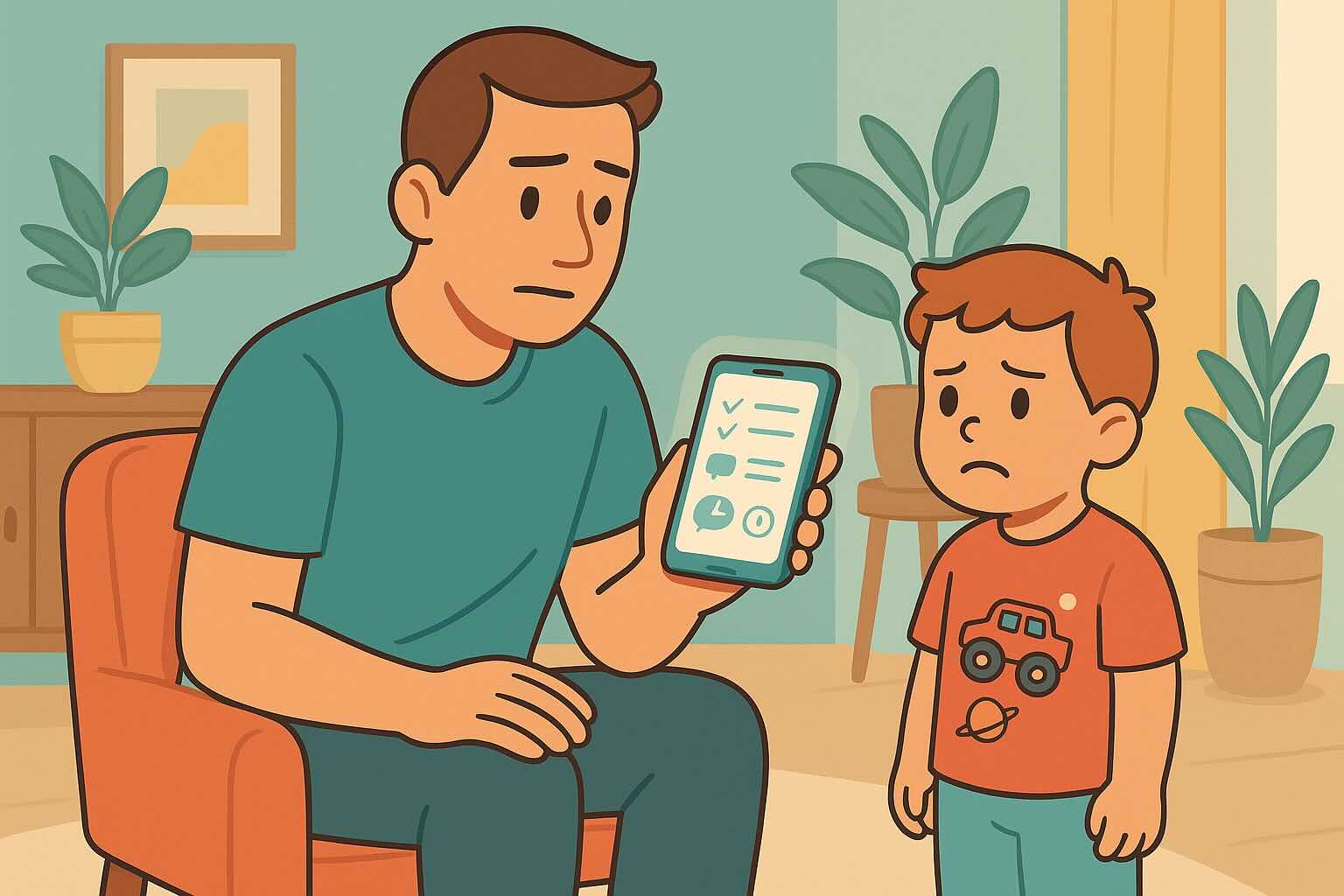
24/7 AI Parenting Assistant
Get instant, personalized advice with expert-curated parenting knowledge. Chat with your AI coach anytime, anywhere.
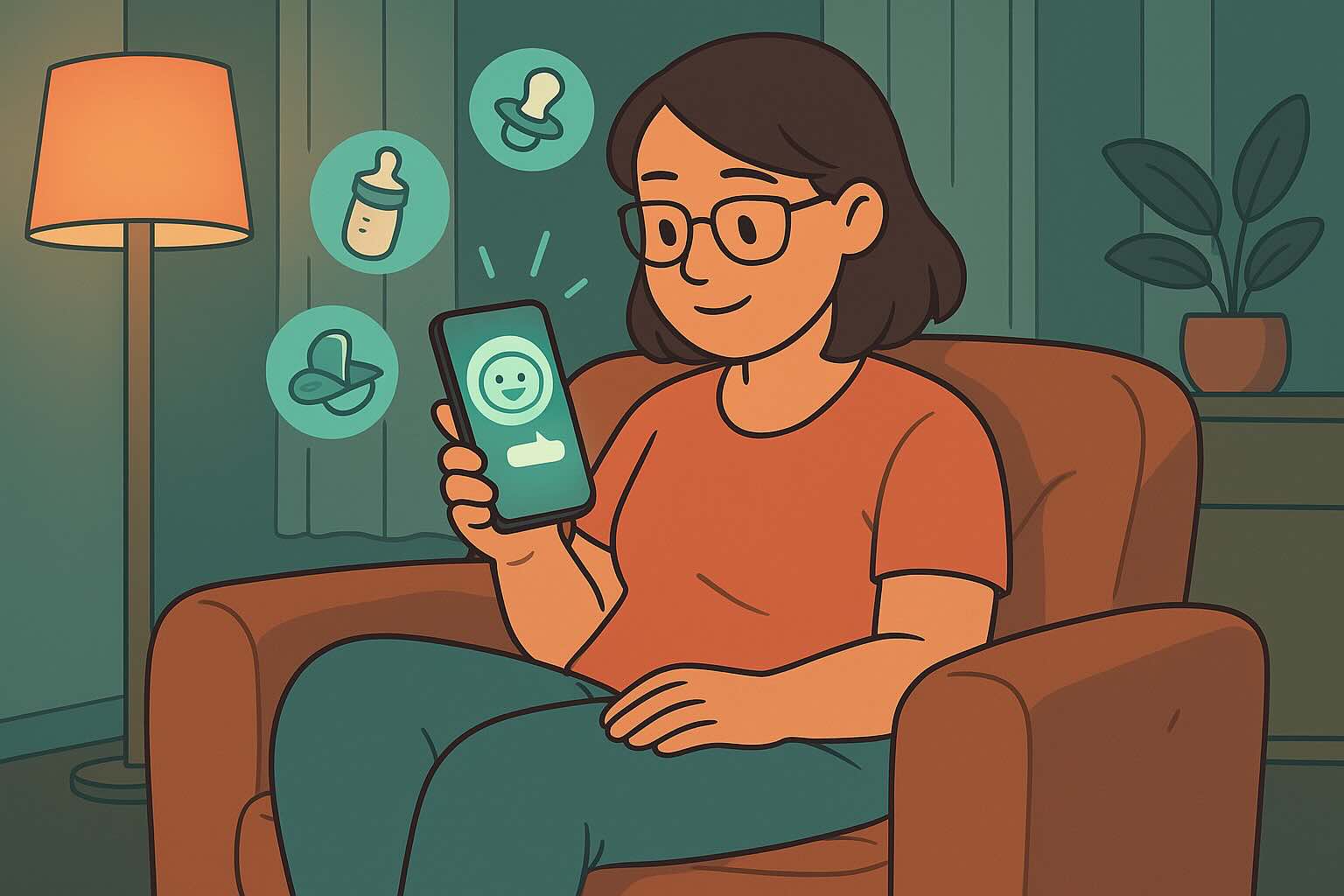
Boundary Setting Scripts
Set firm, loving boundaries without punishment using evidence-based scripts and strategies that build cooperation and respect.
Frequently Asked Questions
Need personalized support?
RootWise's AI coach can provide tailored strategies for your specific situation, available 24/7 when you need it most.
Learn More About AI Coaching →